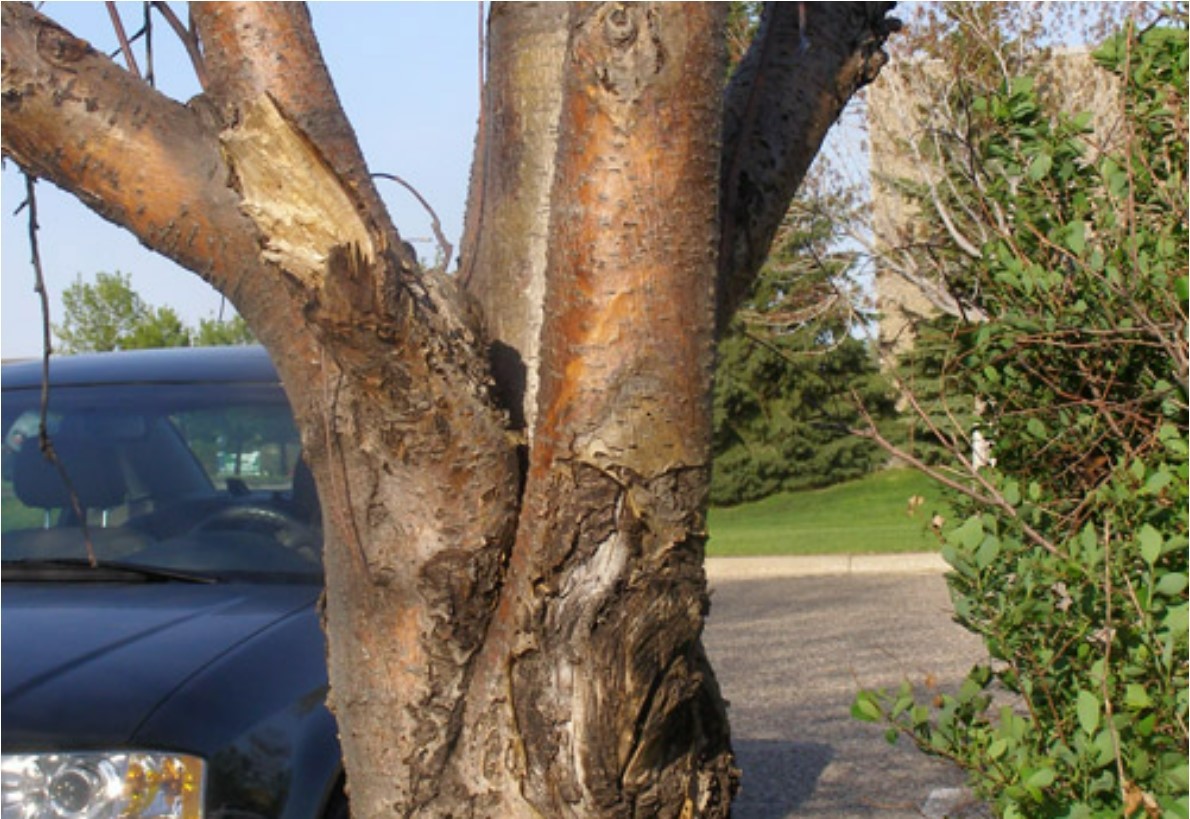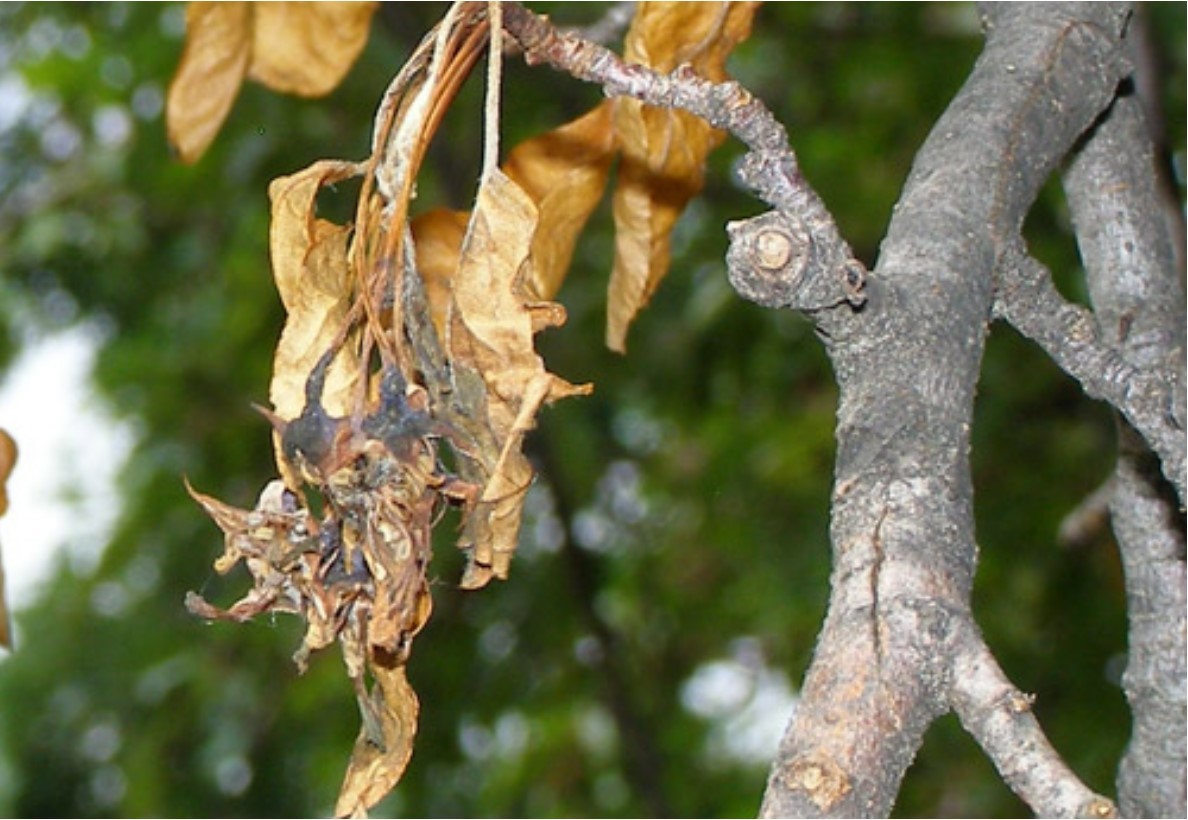Fire blight disease attacks a variety of trees in the rose family but is most common on apple, crabapple, cherry and pear trees. Only trees and shrubs in the rose family are susceptible, including cotoneaster (Cotoneaster spp.), hawthorn, mountain-ashes (Sorbus spp.) and
occasionally the saskatoon (Amelanchier spp.), spirea (Spirea spp.), rose and raspberry. Different species of trees are affected by Fire blight in varying degrees.
Fire blight is caused by the bacterial pathogen Erwinia amylovora. It is spread from tree to tree by splashing rain, bees, flies, and other insects. Under favourable conditions, bacteria multiply rapidly contaminating hundreds of blossoms quickly. The bacteria penetrate and infect the blossoms, then continue down the fruit spurs, twigs and even branches, killing the tissue along the way. Even when the disease has not been a problem in the past, the bacteria can be present in an orchard at low levels, causing significant losses.
Sign and Symptoms
Leaves near the growing tips and the flowers suddenly wilt, turn reddish brown to black and may appear to have been scorched by fire. Infected new growth is often curled at the tip (shepherd’s crook). A slimy bacterial ooze may be noticed on newly wilted shoots. The twigs and sometimes the larger branches are blighted. Cankers can develop on the trunk and branches. In some varieties of apple and crabapple, only the blossom spurs are affected.
Prevention
Pruning
- If the infection is minor, prune diseased twig and branches in late winter when the tree and bacteria are dormant.
- Sterilize pruning tools with 10% bleach between each cut.
- Avoid heavy pruning and excessive nitrogen fertilization which stimulate excessive succulent growth of leaves and shoots.
Control - What you need an arborist to do
Pesticide
- Streptomycin can effectively control fire blight. Check with your arborist for the appropriate application time before your harvest.


Tree Health Issues
Wondering about costs?

